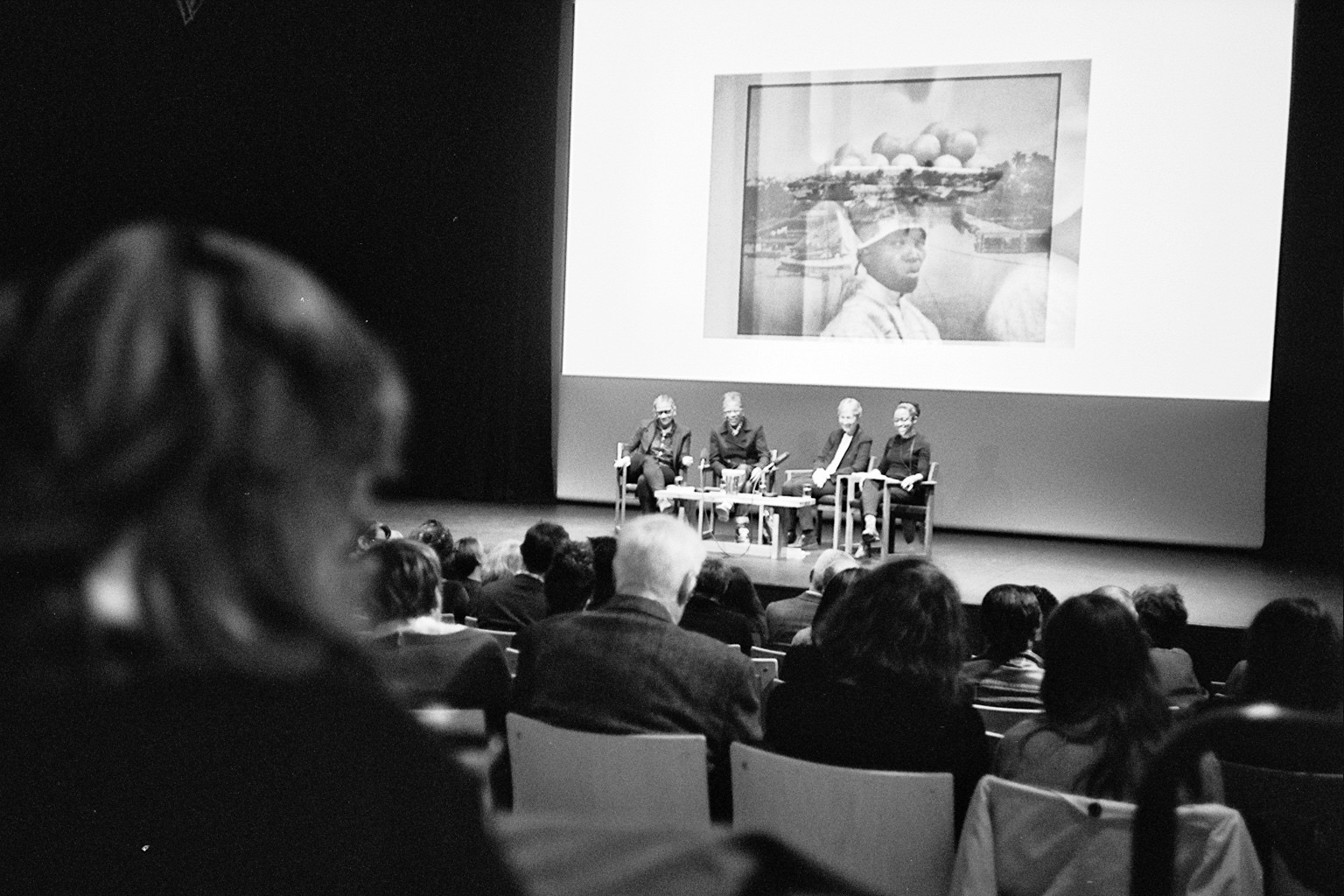Words by Elsa van Helfteren & Rosa Lichtenstein
How does photography give agency to those ‘on the edge’? We interviewed Ingrid Pollard ahead of her panel event at the ACCA last autumn. Here, the writers reflect on Pollard’s photography and her experience at Sussex.
Ingrid Pollard is a photographer, media artist and researcher. She studied film and video at the London college of printing, an MA in Photographic Studies from the University of Derby and a PhD at Westminster University. Her core concern over her years of practice has been to document black experience. She’s been exhibited at monolithic art institutions such as the Victoria and Albert Museum and the Tate. As well as exhibiting in the white cube setting, she also displays her work in unconventional ways, on billboards or in barns, this change of display attracts an entirely new audience. The relationship between the observer and the photograph becomes an integral aspect of the artwork itself, this is clear in her current project at Sussex.
Pollard is the inaugural Stuart Hall Fellow here at the University of Sussex. In November at the Attenborough Centre for the Creative Arts (ACCA), Ingrid spoke about her current project The Valentine Days. In conversation with Pollard, was Catherine Hall and Lubaina Himid. Catherine Hall is a historian whose research centres around the rethinking of the relationship between Britain and Empire in the nineteenth century, primarily focusing on England and Jamaica – she is also the widow of Stuart Hall. Lubaina Himid, Turner Prize winner of 2017, makes paintings, prints, drawings and installations which celebrate black creativity and people of the African diaspora while challenging institutional invisibility. We had the opportunity to meet Ingrid before her talk to ask her about what she has been doing at the University of Sussex and the context of her work.
The Stuart Hall Foundation is committed to providing opportunities for students and academics, pursuing themes resonant with the work of Professor Stuart Hall. The late Stuart Hall was a Jamaican born, British Marxist sociologist, cultural theorist and political activist. Ingrid Pollard has been working on an ongoing project called The Valentine Days. Pollard was originally commissioned by Autograph ABP in 2017, to hand tint images by the Valentine Brothers. James Valentine was commissioned in the 1890s by the Governor of Jamaica to photograph scenes of the country and its people. Thirty years after emancipation, the Jamaican Government wanted to encourage tourism and commerce; and as Ingrid described it: “all the things we understand about gentrification.”
Catherine Hall from a historical perspective explained the representation of Jamaica within Valentine’s photographs. “Jamaica is being represented as a place of sublime beauty that is appropriate for commercial development and tourism and those trajectories of Jamaica as that place which is both commercially useful to the metropole – the empire – and this extraordinarily beautiful place.” Hall also refers to what is missing within the photographs: “The idea of visual representations [In Jamaica] was to forget the labour, forget black people, forget money, forget sugar and produce the plantations as places of beauty which would sanitise their money made.”
During her time at Sussex Ingrid started to look at the people who were on the edge of the photographs, people who she referred to as “escapees.” “They had a subject in the middle at the time, but I was interested in the people who might be looking in at the photographer or looking out and trying to give them agency because it felt like they were actively participating in the photograph but in a slightly different way.” By doing so Pollard began “changing the focus of the colonized gaze… I’ve been doing it with manipulation through Photoshop, so it’s very obvious where I have cropped and edited and transformed it. Sometimes blurring out the rest of the people so you can look at them first and then imagine the rest.” The process which Pollard undertook, left her feeling like a spectator, observing the people who were observing the photograph being taken. This creates a new dynamic between the subject and its audience. Pollard explained how she felt like a “ghost, haunting the scene.” Lubaina Himid articulates how Pollard allows the figures on the periphery to re-emerge with new agency. “[Ingrid] going into an archive about yesterday… brought those people out of the archive, introduced them to us and introduced them to each other. They have become people in a place. We feel we know who they are.”
Find more on Ingrid Pollard here. Find more on ACCA events here.
Image credit: Dominic Cheung
Edited by: Louisa Scarlett Hunt

